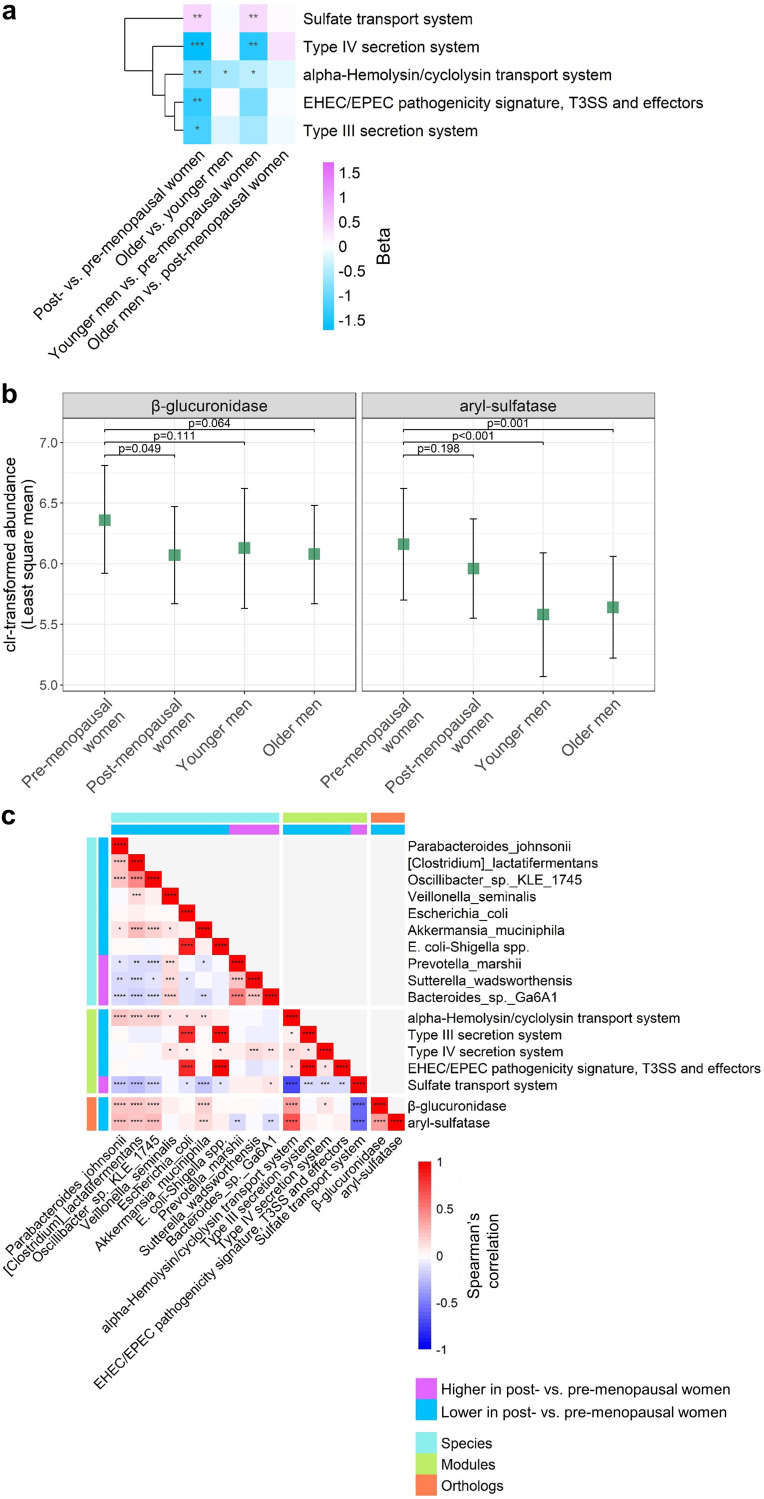FIG 3.
Menopause is related to gut microbiome functions and deconjugation (estrobolome) orthologs. (a) Heatmap of effect size (beta) for KEGG functional modules with detection level of ≥0.6 in ANCOM2 analysis of post- versus premenopausal women. Effect size (beta) coefficients are from multivariable linear regression on clr-transformed module abundance, adjusting for age, Hispanic/Latino background, U.S. nativity, AHEI2010, field center, hormonal contraceptive use, antibiotics use in last 6 months, Bristol stool scale, cigarette use, alcohol use, education, income, physical activity, and BMI. Effect size represents difference in clr-transformed module abundance between the specified groups. *, P < 0.05; **, P < 0.01; ***, P < 0.001; ****, P < 0.0001 in multivariable linear regression. (b) Least-squares means of clr-transformed ortholog abundance in pre- and postmenopausal women and younger and older men. Estimates are from multivariable linear regression, adjusting for the same covariates as in panel a. (c) Partial Spearman’s correlation matrix (age-adjusted) for species, modules, and orthologs, derived from entire study population. Only menopause-related species and modules, and a priori estrobolome orthologs were included in the matrix. *, P < 0.05; **, P < 0.01; ***, P < 0.001; ****, P < 0.0001.

